Featuring 64 years of epochal Pan Am history
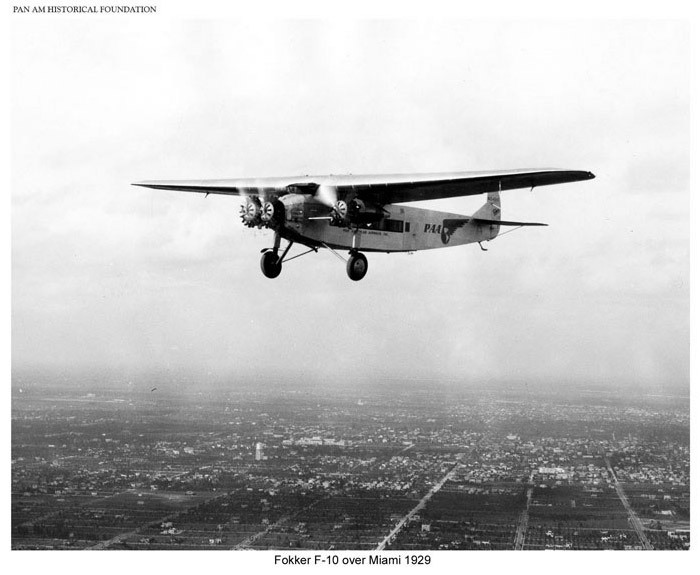
Take-Off - It was the height of the "Roaring 20's" and the promise of aviation ignited the imaginations of people around the world. Pan American Airways was born in the Fall of 1927 in a whirlwind of corporate horse trading and a scramble to meet a Post Office deadline: Fly the mail from Key West to Havana by October 19th, or forfeit the Foreign AirMail contract. Thanks to a last minute and very fortuitous charter, the deed was accomplished, the 250 pounds of mail delivered, and an unparalleled adventure in commercial aviation began - one that would last over six decades.
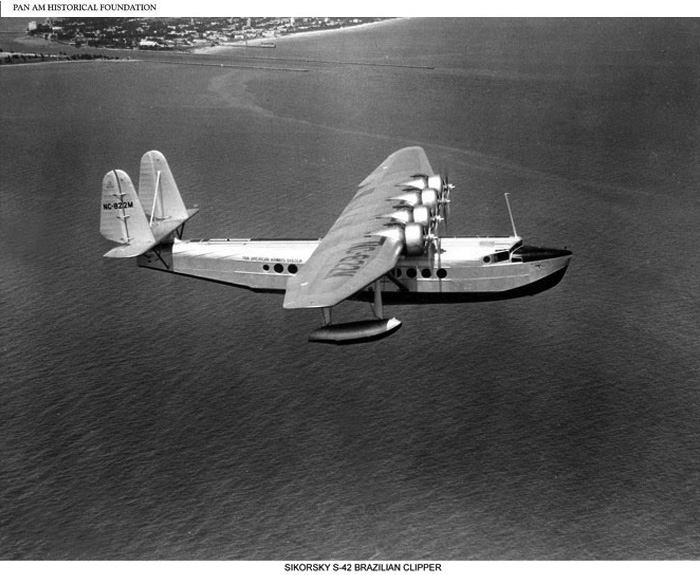
Explorations - The first small planes soon gave way to ever larger craft, spanning ever longer distances. As the 1930's began, Pan Am's small fleet of land planes was complemented by newer, bigger and faster flying boats. Constantly expanding route networks soon spread out from bases in Miami and Brownsville to encircle the Caribbean, and then the whole of Latin America. By mid-decade, the ultimate hurdle was bested, and Pan Am's "Clippers" were crossing the vast Pacific, while Pan Am subsidiary airlines flew in China and Alaska. By the decade's end, the ultimate flying boats, Pan Am's fleet of Boeing B-314s were linking all the continents in the Northern Hemisphere.

War Years - War clouds loomed as the 'Thirties drew to a close. Pan Am worked closely with the U.S. government to secure and maintain vital air routes in a world increasingly fraught with danger. When war did come to America, vital supplies, personnel, and communications were delivered thanks to Pan Am's crews and aircraft, radio facilities, training schools, and airfield construction. In the Pacific, down the length of Latin America, across the Atlantic to Africa, and across the "roof of the world" into embattled China, Pan Am contributed substantially to Allied victory.
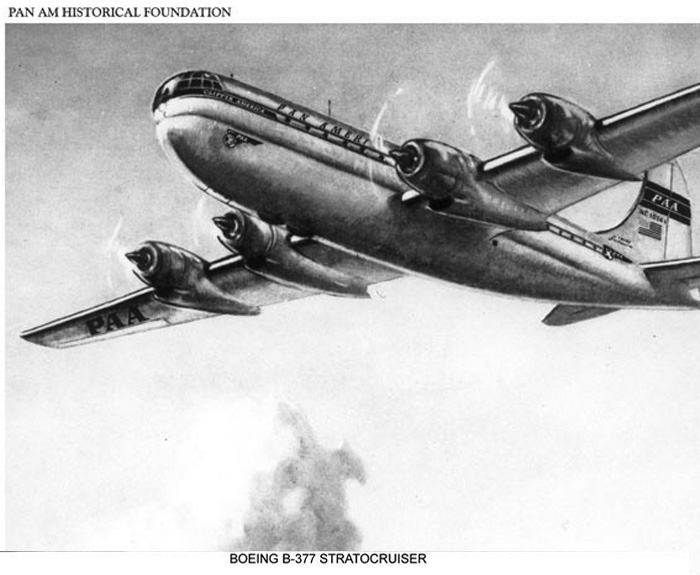
Golden Age - World War Two was over. The flying boats were obsolete. A new generation of large, sleek landplanes were set to carry thousands to foreign destinations where once only a few could or would travel. Ever greater numbers of average people were ready to go, and Pan Am was ready to take them. A newly streamlined corporate logo proclaimed that Pan Am was looking ahead. No other airline could match the experience, or the assets.
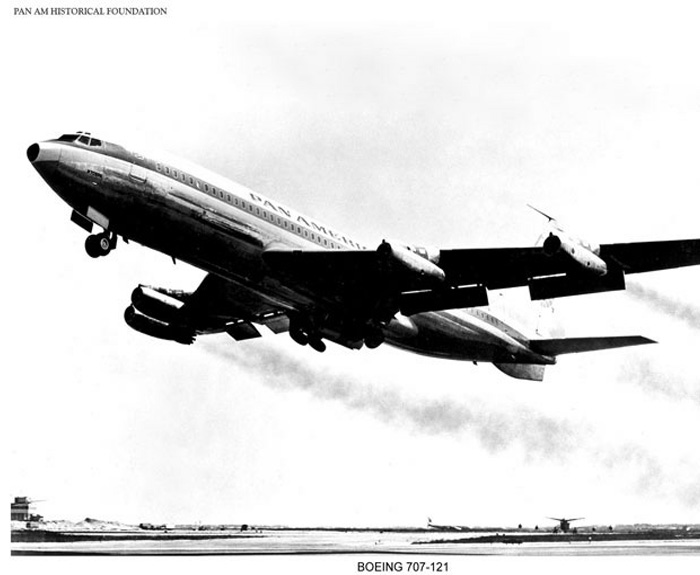
Jet Age - Jets were coming, the world knew. The huge and complicated piston engines powering 1950's airliners were nearing their limit of technical sophistication. But they still seemed a safe investment as the 1960's neared -- except to Pan Am's Juan Trippe. With single-minded purpose, he convinced America's biggest aircraft manufacturing rivals, Douglas and Boeing, to radically push the envelope of commercial air travel. Almost exactly 31 years after Pan Am's first 90-mile flight to Havana, the first Boeing B-707 jet was on its way from New York to Paris. There was no going back, not for Pan American or for the rest of the world.
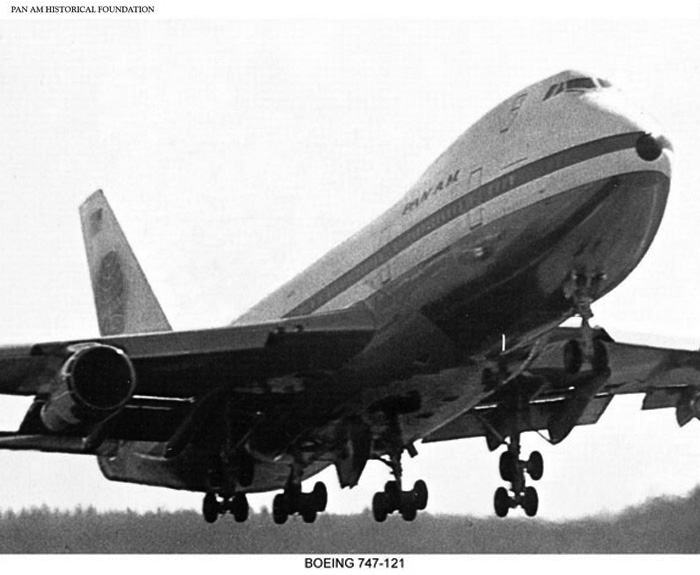
Global Era - The 1960's were barely done when Pan Am again set a standard the rest of the world was forced to follow. Pan American's Boeing B-747 Jumbo Jets brought down the cost of long distance air travel once again. Soon other "wide-body" aircraft followed, as did plenty of cut-throat competition. The expansion in capacity, increasing sophistication among travelers, a burgeoning industry evolving to cater to the demands of millions of new potential customers - all these factors made for a brave new world. So did ever more volatile fuel and commodity prices, labor struggles, and increasingly violent politicization of people in far-away places. Pan Am's world in the last full decade of operation was a far cry from what it had been. The company's powerful history and decades of experience weren't enough. The final revenue flight arrived back in Miami on December 4, 1991.





